If you purchase an independently reviewed item through our site, we earn an affiliate commission. Read our affiliate disclosure.
Every living animal in nature has an enemy. The honey bee is no exception. It has its share of pests, parasites and predators that attempt through every means possible to invade their territory. Humans have contributed greatly to the increase in honey bee pests and parasites. This has come about through the importation and export of bees to and from countries all over the world. In the US, bee farmers have been affected greatly by the prevalence of bee pests, parasites and predators. Irrespective of the widespread infestation of honey bee pests and parasites, these enemies of progress can be kept at bay through various practical measures.
Best Practices to Eliminate Pests and Disease Spreading Organisms in Bees
Honey bee pests and pathogens pose a serious problem to beekeepers in the world over. They are the major cause and agents of transmission of most honey bee diseases. Therefore, the right controls for the pests and pathogens can help curb heavy losses. It goes without saying that prevention is better than cure. Some of the best ways to keep a check on pests and pathogens in beekeeping are broadly categorized into:
- Cultural Control
- Sanitation
- Mechanical Control
- Genetic Control
- Colony Health
- The Beekeeping Community
Cultural Control
One of the best ways to keep a check on hive pests and pathogens is through cultural controls. These are practical and cost-effective ways of control. You can do these through various ways:
- While buying package bees one of the best ways to ensure the colony is healthy is by demanding evidence for pest and pathogen control. A genuine seller should give evidence he or she has been treating the colony for pests and diseases.
- Honey frames should never be interchanged between hives if you suspect a hive has pests and pathogens. Recycled frames should be picked from boxes that have been treated and proven to be free from pests and pathogens.
- While buying used frames and beekeeping equipment ,make sure they have been inspected and certified by a professional. This guarantees your safety from beginning.
- Infected hive boxes should have clear labels at all times so as to prevent disease and pest spread between hives. These boxes should be treated before reuse. You might also bury or burn the equipment and boxes especially those infected with serious diseases such as American Foulbrood (AFB).
- Beekeeping equipment that is not in use should be properly stored. The storage area should not be within reach for the bees and you might also destroy the equipment if not required.
Sanitation
There is no substitute for good sanitation when it comes to best health practices in beekeeping. Bees by themselves do an excellent job when it comes to hive hygiene. Nonetheless, the beekeeper should be at the forefront when it comes to keeping the beehive clean and hygienic. Some of the best sanitation practices in beekeeping include the following:
- Always sterilize beekeeping tools after working on a hive. You can use a flame or isopropyl alcohol for this purpose. Any equipment that is not properly cleaned should never be used until cleaned thoroughly.
- Use 10% bleach solution to clean clothes and gloves used to work on infected hives. You can also dispose the clothes and gloves. This will ensure pathogens and pests are not transmitted to other hives.
- Those who use their bare hands while working on infected hives should ensure the hands are cleaned properly after work. You can rub your hands with alcohol then use warm water and soap to clean them.
- All suspected hives should be handled with caution. Ensure equipment are sterilized, use bleach or destroy gloves and clothes use in these hives, and clean the hands well if you did not use gloves on suspected hives.
Mechanical Control
You can also employ mechanical measures so as to keep pests and pathogens off the bee colony. These are quite practical and easy to employ. They include:
- Crevices and holes should be sealed to bar arthropod pests and other small insects from entering the hive box and devastate the bee colony.
- Ensure you have a screened bottom since this helps reduce varroa mite infestation.
- Ensure the hive box is well raised or elevated and protected to keep off mice and other rodents. This will also ensure a good supply of air into the hive. It also helps prevent moisture from building up within the hive.
- Drone brood trapping can also help reduce varroa mite infestation.
Genetic Control
This is a shortcut to keeping pests and parasite off the beehive. Genetics play a crucial role when it comes to the resistance to disease and parasites. Researchers have devoted serious efforts into studying and deciphering the relationship between genetics and disease resistance in bees. Some species of bees have been known to resist certain diseases such as American Foulbrood (AFB) whereas others are susceptible to the disease. There are also certain species of bees that have stronger defense against pests and parasites.
To ensure you are on the safe side, purchase stock that is resistant to diseases and pests. For instance, consider the stock that can resist varroa mites and American Foulbrood.
Colony Health
The health of the colony is critical for the survival of the stock and offspring. A sure way to keep pests and parasites away from the beehive is by keeping a healthy bee colony. To ensure you have a healthy stock, do the following:
- Regular checks should be conducted for American Foulbrood (AFB). The brood combs should be checked and ascertained to be healthy or not.
- Monitor the hive for Varroa mite presence. You can use sticky screen, powdered sugar roll, or ether roll to do this.
- Monitor the hive for rodent invasion. Checked out the box for any signs of burrows or chewed wood.
- Checked out for stolen honey frames or exposed hive lids. This may mean a bigger predator has invaded the bee colony.
- Check out the colony food reserves. You can lift the hive and if its light then it means food reserves are dwindling and will require supplementation. The colony should have enough food for it to be healthy and strong.
The Beekeeping Community
There is power in communities and that explains why most career professionals have formed unions. The power of a beekeeping community cannot under-estimated. This creates a common ground where ideas and experiences can be shared freely among members.
Beekeeping communities are particularly helpful to the beekeeper since beekeeping is one wide career with a lot to enjoy and share. You will benefit immensely from a team that seeks a common goal. A community can help decipher some of the myths and beliefs that relate to keeping bees. It can provide a platform where ideas and experiences about pest and parasite control are shared.
Therefore:
- Be a member of a local beekeeping club. This will give you early warnings in case there is a pest outbreak in your area.
- Do not hesitate in reporting abandoned hives and cases of American Foulbrood to your nearest beekeeping regulator.
- Ensure your license is up-to-date and is renewed upon or before expiry.
- Join online beekeeping communities and be connected to other beekeepers. Information, lots of it is available free of charge on these platforms.
Common Honey Bee Pests and Parasites
Varroa Mites
Varroa mites are regarded as the number one parasite affecting honey bees all over the globe. They mainly thrive through feeding on the blood of the adult honey bee. They also propagate its offspring on the honey bee pupae. These mites are a serious threat to bees and they mainly weaken the bee and spread viruses and other harmful pathogen. They mainly spread between bee colonies through robbing and drifting.
Varroa mites are difficult to manage since they are highly productive and grow and spread at a rapid speed. They mimic the growth cycle of the honey bee and that explains why no single treatment strategy on its own is effective against the mite. For instance, when there is no brood rearing in the colony, the Varroa mites do not reproduce; instead they remain on the adult bees.
Some of the symptoms of Varroa mite infestation include decayed or deformed abdomen and wings. In terms of behavior the bees are disturbed and they become susceptible to pesticides.
To mitigate this pest, chemical control is the the most optimal method, but it should be done with care as it may contaminate the honey or even intoxicate the bees. However, you should apply chemicals to the hives after honey harvesting.
Tropilaelaps Mites
Tropilaelaps Mites are similar to Varroa mites but it is in most cases it is much more serious. In fact, studies have shown that the prevalence of this mite can inhibit the multiplication of the Varroa mite. In terms of size , they are smaller than Varroa mites and when present in large numbers in a honey colony they move around rapidly. They live and grow within the brood cells all through their immature stages.
Some of the symptoms of their attack on bees are reduced abdomen size, shortened life span, and wing deformation. Those bees with deformed wings can be seen crawling within the hive entrance and on the surfaces of the comb.
This parasite is quite a headache to control. Chemical control is effective but it has to be applied within the recommended dosage. Colony manipulation is another effective mitigation strategy. This is where the comb frames are temporarily removed; both sealed and unsealed. This will starve the mites. This strategy works best during heavy pollen-flow season.
Tracheal Mites
Tracheal mites, also called Acarapis woodi, this dangerous mite infects the queen’s, drones’, workers’ and adult bee’s tracheal system. It is an extremely small mite, which lives and breeds with the tracheal system of the bees. They are difficult to notice and have no clear symptoms of infestation. However, there is a clear difference between an infested colony and a healthy colony. The lifespan of infested bees is greatly shortened since they lose strength and end up dying during the cold seasons.
The Tracheal mite can be controlled by employing chemotherapeutic methods. Formic acid and ethereal oils perform an excellent job of controlling the Tracheal mite.
Asiatic Bee Mite
Another mite that affects bees within the US is the Asiatic bee mite, also referred to as Varroa jacobsoni which was first discovered in the 1950s. Its effect on the eastern honey bee is minimal but it affects the European honey bee in greater dimension. It is reported to cause serious damage on thousands of bee colonies in temperate parts of Europe. What makes this mite a serious one is the fact that all its stages feed on adult and larval stages of the honey bee. They are however more attracted to the drone brood. They can be identified by contrasting the dark brood from white brood of the drone larvae and pupae. The dark brood is infested by the mite and the white brood free from the mite.
Hive Beetles
Also referred to as Aethina tumida, hive beetles are another invader that devastate a honeybee colony. It came into the US in 1998 and is now a common parasite that stretches as far as Canada. It mainly invades weak colonies and storage combs. They are prevalent mostly during honey extraction. It usually lives and multiplies within and outside the bee colony. However, it deposits most of its eggs in the honey colony. Its larvae survive on honeycombs and pollen. The adult beetle is dark, black to brown.
The major symptom of a beetle infestation is the change of honey taste and color. Its larva is mostly found in the honey combs. They are quite easy to differentiate from the wax moth. They have longer legs and their backs have spikes.
To mitigate a beetle infestation, remove weak colonies and maintain only the strong ones. A chemical treatment also works on the beetles.
Bee Louse (Braula coeca)
The bee louse wingless fly, a reddish-brown and small sized adult with tiny heads live on the queen bee. It may also be found on the worker bee. They are generally less harmful to the bees and hence pose no serious harm to the bee colony.
This can be controlled by maintaining a healthy bee colony. Stronger colonies are less susceptible to attacks from the bee louse.
Cockroaches, Spiders, and Earwigs
Small and large arthropods usually seek shelter in the beehive. They are seen as pests since they benefit directly from the hive even though they do not consume honey or the bees. They solely use the hive as their home and do not benefit the bees in any way. These pests can be managed through proper cleanup of the beehive and hive equipment.
Wax Moths
Wax moths are another parasite that causes huge losses to beekeepers globally. It not only destroys the bee colony but it also damages bee products. The wax moth destroys the combs, pollen, wax and the comb foundation. One of the most common sign of a wax moth infestation is where the emerging adult worker bees and drone are unable to leave the cell since their body is trapped by silken threads.
The Galleria mellonela, referred to as the greater wax moth is responsible for large losses within the USA, especially warm regions such as southwestern and southeastern parts of the USA. These regions are warm and thus provide an excellent habitat for this pest to thrive. Its larval stage incurs maximum damage on the bee colony. It digs into the combs and leaves tunnels that are silk-lined. The moth eventually destroys the comb resulting in masses of web.
The wax moth can cause colony dead-out and it would rather invade unprotected colonies and can be an early indication that the bee colony is not doing well. Wax moths will come in when the colony is weak due to some factors such as: starvation, disease outbreak, or any other cause. Wax moths not only invades the beehive but also targets stored comb.
A wax moth infestation can be prevented by building a stronger bee colony that is able to secure its territory by sealing cracks and crevices on the beehive. Some chemicals are also available for controlling the pest on living honey bee colonies. Certainly for control, a bacterial disease spore has recently been released to the market and is highly effective in controlling the wax moth. It mainly targets the wax moth and will never harm the bees or humans.
Chemicals such as ethylene dibromide (EDB), methyl bromide, paradichlorobenzene (PDB), and aluminum phosphide have been used in the past to eliminate wax moth. However, not all of them have been approved for use. PDB is the easiest to apply and is less dangerous when compared to the other chemicals. Unfortunately PDB does not annihilate all stages of the wax moth and will therefore fail if used in severe cases of wax moth infestation. Expert advice is required before you use any chemicals to eliminate pests in beekeeping. It would be wise to buy these chemicals from supply houses since that is certainly the proper way to get full information about the chemicals.
Common Honey Bee Predators
Raccoons
Depending on where you live, these raccoons may not be common but when they invade they can incur serious damage to the beehive. These predators usually feed on insects and the bees are a great addition to their diet. They can rip apart frames and consume both honey and bees. The predator is similar to the bear though smaller in size. They do not have the power to knock over hives but they climb and invade weak frames.
Some of the signs of a raccoon invasion include damaged honey frames removed and scattered all over the bee yard. Often some occupied hives are left untouched which is a clear sign of their invasion.
It is quite easy to keep off raccoons from the beehive. Take a piece of plywood and fill it up with nails or screws on one side. This should be position at the front of the hive so as to act as a barrier against any potential invaders. You can also add some additional support to the board by attaching it to stakes on both sides so as to withstand pressure from determined animals. This might be a risk when working on the hive and thus you need to remove the barrier whenever you are working on the hives. You should place the sharp end flat on the ground facing downwards.
Black Bear
Bees forage in wild and feral areas and these are areas where bears are common. The northeast, southwest, and southeast parts of the USA are prime bear habitats and black bear is particular a top predator of bee colonies. It mainly incurs some mechanical damage on the beehive and will consume both the honey and the bees.
A well maintained electric fence will help keep out black bears. The fence should be erected before introducing the bees to the area. A combination of two or more electric wires will suffice. You may also consider adding a woven wire as an inside fence.
Birds
Birds are a serious problem to beekeepers in Africa and Asia. As for those within the US, this is a minor problem. Bee-eaters and bee wax eaters are the common predators that invade hives. Other birds have been identified to lead bigger mammals to hives that will overturn hives and expose the bees and honey. Once this is done, the birds will then feast on the spoil of their hunt after the bigger mammal has eaten to its satisfaction.
Some of the most common predator birds in the US, especially North America include: swifts, shrikes, titmice, and flycatchers. They are a challenge to beekeepers not to mention the notorious woodpecker known to persistently sit near the hive dining on the bees. It will also dig its way into a fully-secured hive and access the precious honey. This predator will not only consume the bees but also destroys the beehive and eats the bees. The woodpecker will only invade a weak hive and will most likely attack during the cold season when insects are scarce.
Birds can be kept at bay by building a barrier, for instance, a cardboard over the hive. This will prove to be stressing for the bird to burrow through and get to the bees and honey. You may as well use a motion detector linked to a floodlight or radio. A scarecrow will also help keep birds away from the beehive.
Ants
Ants are perhaps are the most common predators of honey bees. They normally live as social insects and when they invade a colony they take everything – honey, dead/alive bees, queen and brood. They can also attack the beekeepers themselves. Colonies under ant attack tend to be aggressive and those bee colonies that are weak abandon their hive.
One of the most effective ways of dealing with ant infestation is by searching out their nests then destroying it by burning. Another strategy is by raising the hives with 30 to 50cm posts that have been treated with grease or oil. Another alternative is place the hive stands on plastic containers of a tin that is filled with oil or water.
Wasps and Hornets
Wasps are an enemy to the honey bee. They are common across the world especially the genus Vespa. Wasps attack the bee colony and are the major cause of bees abscond the hive. They target weak honey bee colonies.
Other wasps and hornets species have also been identified to invade the honey bee colony. They incur serious damages on apiaries. An example is the genus Vespula more common in temperate regions of Asia. The attack of these predators across all species is seasonal and will usually begin with an attack on slow-flying bees. They attack one at a time at the entrance of the hive. This is later followed by slaughter phase where more than 20 or 30 wasps and hornets invade the bee colony. They attack the worker bees and drop the dying bees outside the hive. They then invade the hive, consume honey and carry away surplus brood.
Some of the control measures for wasps and hornets include bait-trapping at the hive entrance through the use of protective screens. Another method used is through trailing a lone wasp as it heads back to their nest then annihilate the entire family of the wasps. This is time consuming and might not be efficient in case there are plenty of nests within the area. You might also capture the individual wasps and hornets when seen foraging near the bee hive. This can be an effective method of counteracting the hunting phase of the wasps and hornets. A narrow hive entrance can also help prevent these predators from entering the hive.
Amphibians
Believe it or not, amphibians are a serious problem to beekeepers. Toads and frogs forage on bees and might not be quickly detected if you do not have a keen eye. They attack at night and at this time no one is around to monitor the hive. They are finally detected when a huge damage has been incurred.
The presence of dark brown dropping around the hive area is a sign of amphibian attack. These are normally scattered at the hive entrance. You can use a twig to spread apart the droppings. This should reveal bee part remains and that surely means there is an attack by amphibians. If this is allowed to continue it will ultimately weaken the bee colony. Stronger colonies might withstand this but weaker ones might not.
The frogs and toads employ a similar strategy when attacking the bee colony. They wait at the hive entrance and feast on passing bees. Those hives placed near the ground are an easy attack. The attack can be worse if the hive entrance is big enough for these predators to go through.
Place the hive at an elevated position away from the ground so as to keep amphibians from accessing the hive. A stand that is 40 to 60cm away from the ground offers the best protection.
Humans
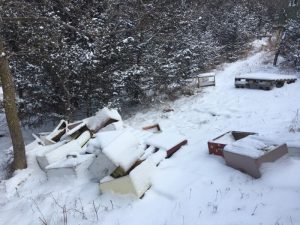
As much as we here at BeeKeepClub love bees, unfortunately not everyone feels the same. Humans are surprisingly one of the most notorious predator to honey bee colonies. The bee colony can be stolen or burned by humans who just consider them to be a pest. Humans have also invaded the bee colony indirectly through urbanization and reduction of bee forage as a result of large scale agriculture. Collectively, humans have done a lot to make the life of the bees unbearable. For instance, most beekeepers have encountered situations whereby the beehives are stolen, burnt, or even fell due to the activities of humans. This leads to the complete loss of a bee colony that takes years to build.
Being a Good Neighbor
In order to manage humans, it is important for the beekeeper to acquaint themselves with good neighbor guidelines as explained below:
- The beehives should never be placed close to occupied buildings or along lot lines. If unavoidable try to locate the hives away from used entrances or areas where there is foot traffic.
- It is recommended that you erect a 6 foot barricade to keep the bees away from lot lines. There are many options that can help build the barrier: shrubs, brick walls, or any other kind of thick fencing. You may as well place the bees on a platform or roof so as to ensure the bees do not fly across property of your neighbors.
- A nearby supply of water should be provided so as to ensure the bees do not look for water elsewhere. Lack of water will force the bees to venture into neighboring swimming pools. Remember to keep changing the water so as to prevent stagnation or mosquito breeding.
- Proper hive management to prevent robber bees and swarming.
- Aggressive colonies should be requeened to minimize its aggressiveness.
- Surprise your neighbors with a pound or two of honey each year and they will be friendlier.
Conclusion
There are so many pests, parasites and predators that attack bee colonies. The bees have developed their own defense mechanisms given the fact that they have lived in the wild for ages The beekeeper’s pest, parasite and predator control efforts serves to complement what the bees have put in place. A better understanding of the invaders and how to control them will therefore help guarantee a stronger and healthy bee colony.
Remember, honeybee productivity is affected by how healthy the colony is. Weak colonies cannot produce at optimum levels and will not withstand pest, parasite and predator invasion. Conversely, a stronger bee colony can defend itself and will certainly produce more honey and build stronger offspring.
References
- https://extension.psu.edu/a-quick-reference-guide-to-honey-bee-parasites-pests-predators-and-diseases
- https://www.uaex.uada.edu/farm-ranch/special-programs/beekeeping/hive-pests-diseases.aspx
- https://www.dadant.com/learn/honey-bee-pests-diseases-common-pests/
- https://canr.udel.edu/maarec/honey-bee-biology/honey-bee-parasites-pests-predators-and-diseases/
 BeeKeepClub Resources and Guides for Beekeepers
BeeKeepClub Resources and Guides for Beekeepers


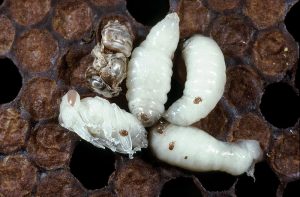


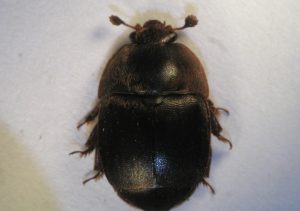
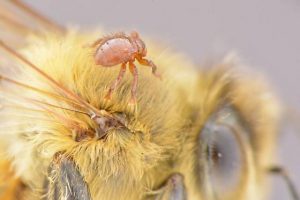

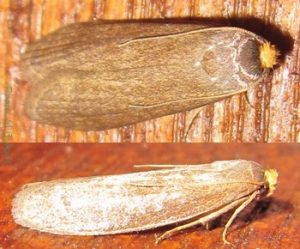
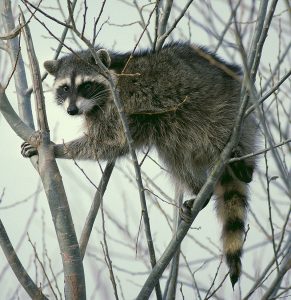
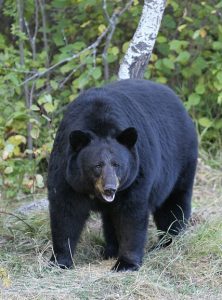


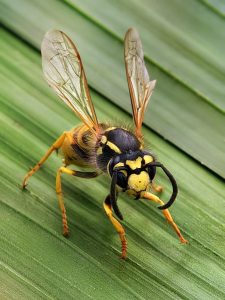
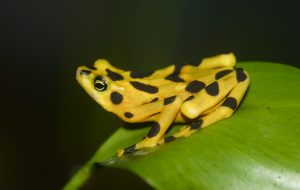
Awsome